Insulating roller shutter boxes

There just outdoor air inside a roller shutter box - because the gap towards the outside, where the roller shutter exits the box, is permanently open towards the outside. Usually, just a board separates an old roller shutter box from the inside. Heat transmission is particularly high here (2.5 to 4.5 W/(m²K). Making improvements here is relatively easy and also helps a lot.
Usually the cover of the box can be unscrewed towards the inside. There is often a lot of dust gathered inside, this can be cleaned up easily with a vacuum cleaner. Inspect and measure the inner space so that the person carrying out the work knows what size of insulation panels is needed. Because it must be possible to wind and unwind the roller shutter inside the box without striking against anything, there is often very little space available for additional insulation. For this reason we recommend that insulation panels with the lowest possible thermal conductivities should be used here. In this example, 4 cm phenolic foam boards with a thermal conductivity of 0.021 W/(mK) were used. This has a high insulating effect even with less available space. | 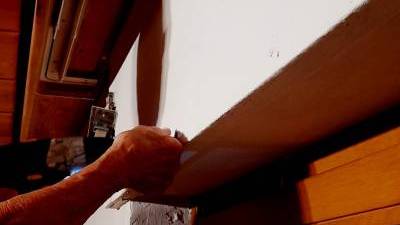 |
It is helpful to make a sketch showing the surfaces that are to be insulated and how this is to be achieved. Note: also the surfaces at the top and bottom extend from the warm room into the cold roller shutter box, so it makes sense to insulate these as well while you're at it. |  |
It is quite easy to cut these panels to size using a sharp knife. A non-compressive low-isocyanate PU adhesive as well as double-sided tape proved suitable for joining these together. | 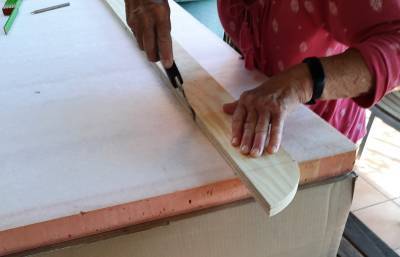 |
Double-sided adhesive tape applied to the inner cladding panel of the roller shutter box. | 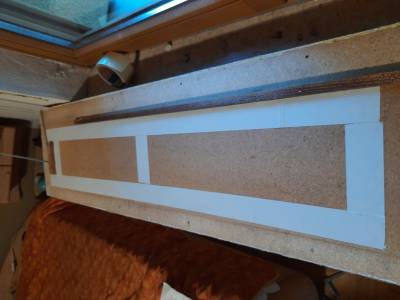 |
The cladding panel is now insulated and tape is also applied for protection. The cut-out for the belt can also be seen – a certain amount of leakage will naturally still occur near the opening for the belt, but this is just a single point; and if this is all that remains it's already quite good. Of course there are also even better (relatively) airtight specific solutions for this as well. | 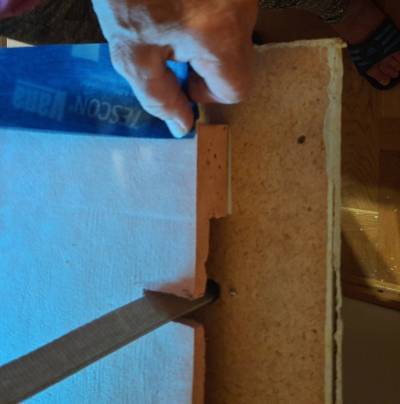 |
What is far more important is the connection joint of the panel, because its length is more than a metre. A matching sealing strip (“tubular seal”) was applied here. The seals used here have proved successful in many applications. They are available in many different materials; for long durability we prefer those made of rubber or silicone 1). The whole thing is then closed again, more than half of the heat losses in this area will be eliminated in this way. | 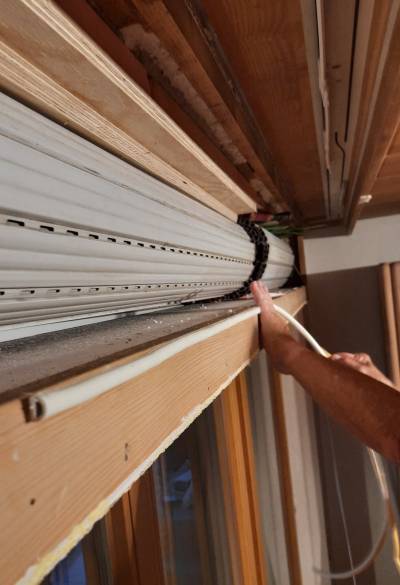 |
Because this has a complicated multi-dimensional structure, we calculated this using a numerical heat flow software program, “before” (left) and “afterwards” (right). This doesn't just provide a colourful picture but also shows the surface temperature distribution, which is now significantly better, as well as the total remaining heat loss, which is considerably reduced. |  |
Back to overview of structural measures.
